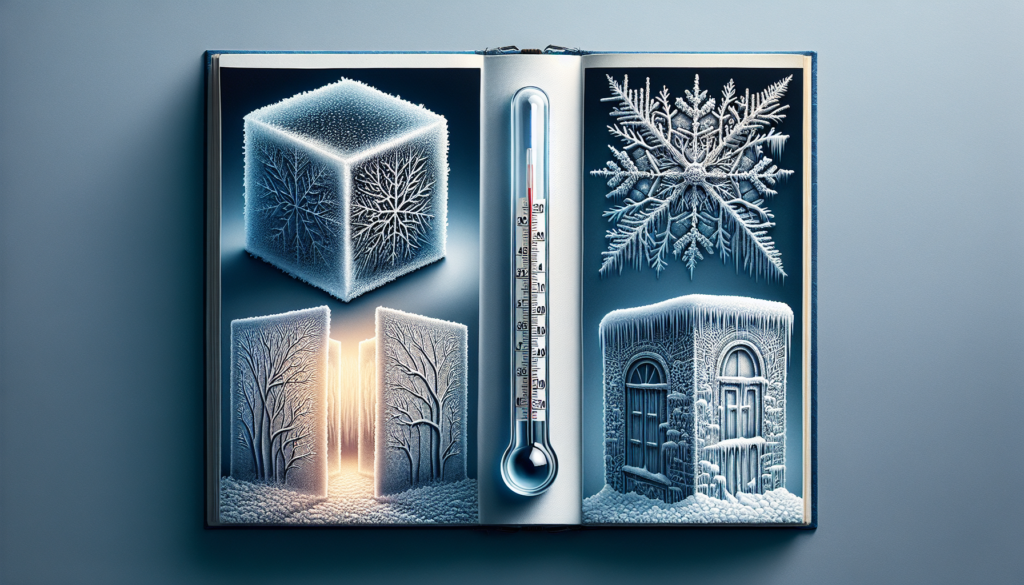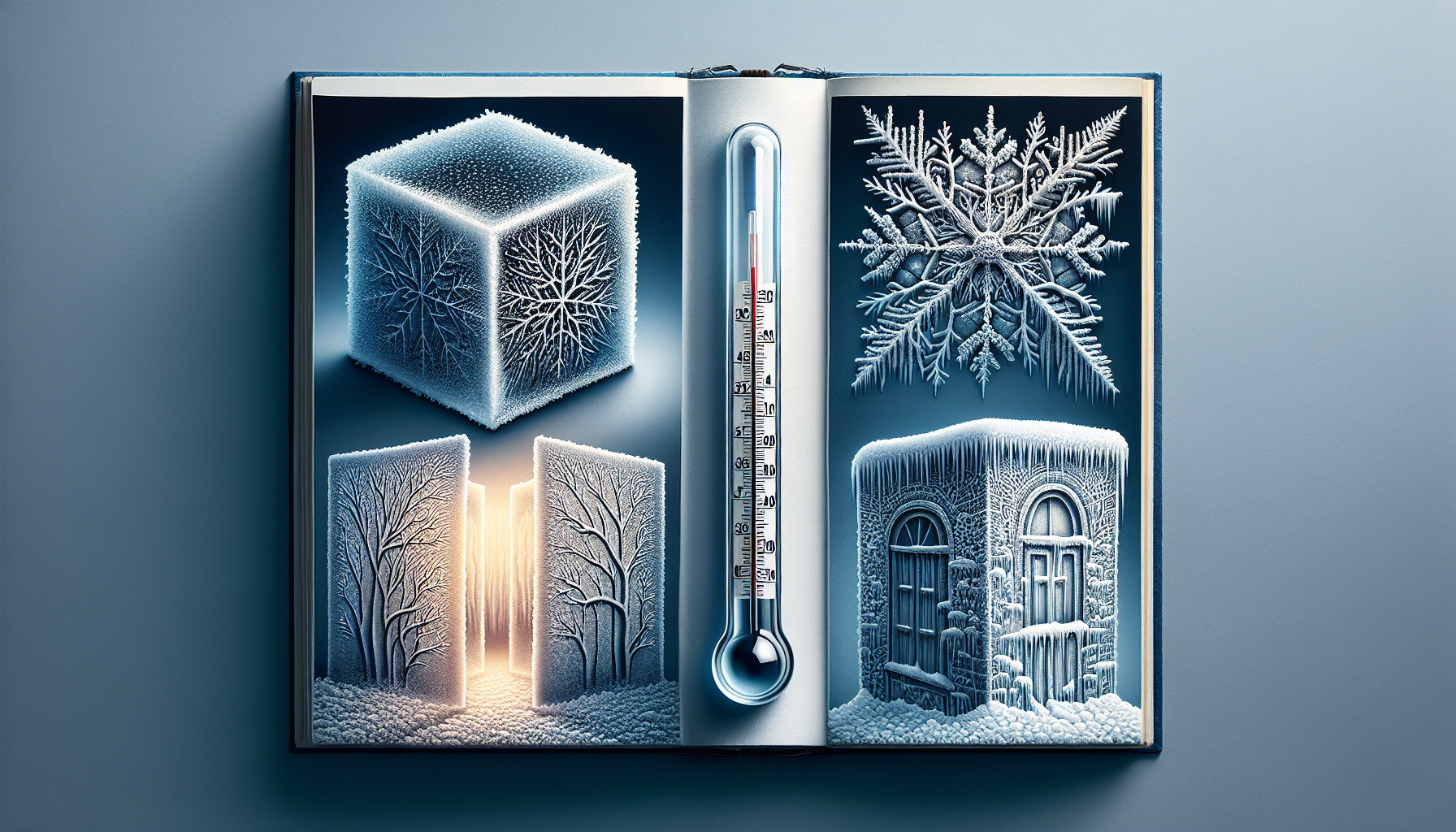Picture this: you’re standing in front of your fridge, contemplating whether to set the temperature dial at 7 or 1. The eternal question arises: which one is colder? It’s a puzzling conundrum that often leaves us scratching our heads. In this article, we’ll unravel the mystery and shed light on whether 7 or 1 is indeed colder on a fridge. Brace yourself, because the answer might surprise you!

CHECK OUT MINI FRIDGES AND KEGERATORS ON AMAZON
Understanding Temperature Control in Refrigerators
The Purpose of Temperature Control in Refrigerators
Temperature control is a crucial feature in refrigerators as it allows you to preserve your food by maintaining the optimal temperature. The purpose of temperature control is to prevent spoilage, maintain freshness, and ensure food safety. By regulating the temperature, you can extend the shelf life of perishable items and maintain the quality of your food.
How Temperature Control Works in Refrigerators
Temperature control in refrigerators is achieved through a combination of sensors, thermostats, and cooling systems. When you set the desired temperature on your fridge, the sensors detect the current temperature inside the fridge. If the temperature exceeds the desired level, the thermostat signals the cooling system, typically the compressor, to kick in and start cooling. Once the temperature reaches the desired level, the cooling system shuts off until it is needed again. This cycle repeats to maintain a consistent temperature inside the fridge.
Common Temperature Settings on Refrigerators
Most refrigerators come with temperature control settings ranging from 1 to 7 or a similar numerical scale. These numbers correspond to different temperature ranges, with 1 being the warmest and 7 being the coldest setting. However, it’s important to note that the temperature range associated with each number may vary between different refrigerator models and brands. It is advisable to consult your refrigerator’s user manual for specific temperature settings.
Fridge Temperature Zones
Refrigerators are often designed with different temperature zones to cater to the varying needs of different food items. The main temperature zones in a refrigerator include the freezer, the refrigerator compartment, and sometimes additional temperature-controlled compartments such as crispers or deli drawers. Each zone has a specific temperature range, which can be adjusted with the temperature control settings. Understanding these temperature zones and their associated temperature ranges is vital for proper food storage and preservation.
Exploring Temperature Measurement on Fridges
Understanding Fridge Temperature Measurements
Fridge temperature measurements are typically presented in either Fahrenheit or Celsius. These temperature units indicate the degree of hotness or coldness within the refrigerator. Understanding how to interpret these measurements is essential for effectively managing the temperature control settings.
Differences Between Fahrenheit and Celsius
Fahrenheit and Celsius are the two most commonly used temperature scales in refrigerators. Fahrenheit is widely used in the United States, while Celsius is the dominant scale worldwide. The main difference between the two scales lies in their zero points and the size of their degree intervals. Celsius sets the freezing point of water at 0 degrees, while Fahrenheit sets it at 32 degrees. Additionally, each Celsius degree is equivalent to 1.8 Fahrenheit degrees.
Temperature Scales Used in Fridges
When setting or reading the temperature in your refrigerator, you may have the option to select either Fahrenheit or Celsius. It is essential to ensure you are familiar with the scale being used to prevent any confusion or inaccurate temperature management. Some refrigerators allow you to switch between Fahrenheit and Celsius settings, while others may only display one scale.
Decoding the Numbering System on Refrigerators
Understanding the Numbering System
The numbering system on refrigerators corresponds to different temperature ranges. While the specific temperature associated with each number can vary between refrigerator models, generally, a higher number indicates a colder setting. However, it is important to note that the actual temperature for each number should be specified in the user manual or on the control panel of your refrigerator.
Factors Affecting the Numbering System
The temperature ranges associated with the numbering system can differ based on various factors, including the insulation quality of the refrigerator, ambient room temperature, and the efficiency of the cooling system. These factors can impact the cooling performance and the rate at which the refrigerator reaches the desired temperature.
Typical Number Range on Fridges
In most cases, the number range on refrigerators starts from 1 as the warmest setting to 7 or 9 as the coldest setting. However, this can vary depending on the brand and model of your refrigerator. It is important to consult the user manual or check the control panel for the specific temperature range associated with each number.
Comparing the ‘1’ and ‘7’ Fridge Settings
Meaning of the Numbers ‘1’ and ‘7’
The numbers ‘1’ and ‘7’ on the fridge settings represent the two extremes on the temperature control spectrum. ‘1’ generally indicates the warmest setting available on the refrigerator, while ‘7’ represents the coldest setting possible. These settings allow you to adjust the temperature according to your specific needs and the type of food you are storing.
Clarifying the Misconception
There is a common misconception that ‘1’ on the fridge setting is colder than ‘7’. However, this is not necessarily true. The numbering system is model-specific, and each number corresponds to a particular temperature range determined by the manufacturer. It is essential to refer to your refrigerator’s user manual or control panel for accurate information about the temperature range associated with each number.
Effect of Temperature Setting on Food Storage
The temperature setting on your fridge plays a crucial role in preserving the quality and safety of your food. Setting the temperature too high or too low can adversely affect the longevity of perishable items and lead to bacterial growth or freezing damage. It is important to find the right balance and adjust the temperature setting based on the recommendations provided by the manufacturer or food safety guidelines.
Determining the Coldest Fridge Setting
Understanding Fridge Cooling Systems
Fridges typically use a compressor-based cooling system to regulate temperature. The compressor compresses refrigerant gas, which then moves through the condenser coils, dissipating heat and cooling down. The cooled refrigerant then flows into the evaporator coils inside the fridge. As warm air from the interior of the fridge comes into contact with the evaporator coils, it cools down, maintaining a lower temperature inside the fridge.
Role of Compressors in Regulating Temperature
Compressors play a vital role in determining the temperature inside the fridge. When the temperature rises above the set point, the compressor activates, pushing the refrigerant gas through the system and removing heat from the fridge’s interior. Once the temperature reaches the desired level, the compressor shuts off. This cyclical process ensures that the fridge maintains a constant temperature.
Factors Affecting Fridge Temperature
Several factors can impact the temperature inside your refrigerator, including the frequency of door openings, the ambient temperature of the room, load size, and positioning of the food items. It is important to consider these factors when determining the coldest setting for your fridge, as they can affect the overall temperature stability and performance.
Tips for Proper Refrigerator Temperature Settings
Recommended Temperature Ranges for Fridges
Although the ideal temperature range can vary depending on the type of refrigerator and the food being stored, a general guideline is to set the fridge temperature between 34°F (1.1°C) and 40°F (4.4°C). This range helps maximize food safety and preserve the quality of perishable items.
Setting the Ideal Fridge Temperature
To set the ideal temperature for your fridge, consider the type of food you regularly store. Perishable items such as meat, poultry, and eggs require colder temperatures, so it is advisable to set the fridge to a lower temperature within the recommended range. On the other hand, certain items like fruits and vegetables may be best preserved at a slightly higher temperature within the range.
Ensuring Optimal Food Safety
Maintaining the proper fridge temperature is crucial for ensuring the safety of the food stored inside. Bacterial growth can occur at temperatures above 40°F (4.4°C), potentially leading to foodborne illnesses. Conversely, freezing temperatures below 32°F (0°C) can lead to the deterioration of certain food items and affect their texture and flavor. Regularly monitoring and adjusting the temperature settings can help prevent these issues and ensure optimal food safety.
Techniques to Measure Fridge Temperature
Using a Fridge Thermometer
One of the most accurate ways to measure fridge temperature is by using a dedicated fridge thermometer. These thermometers are designed to provide precise temperature readings inside refrigerators and are readily available in stores. Simply place the thermometer in a central location in your fridge, away from any heat-emitting sources, and refer to the readings to ensure the temperature remains within the desired range.
Alternative Methods of Temperature Measurement
If you don’t have a dedicated fridge thermometer, there are alternative methods to get an approximate idea of the temperature inside your fridge. One method is to place a glass of water with a thermometer inside it and leave it undisturbed for a few hours. The temperature reading of the water will give you an indication of the fridge’s internal temperature. However, it’s important to note that this method may not be as accurate as using a dedicated fridge thermometer.
Accuracy of Fridge Temperature Gauges
Although refrigerators come equipped with built-in temperature gauges, these gauges may not always provide the most accurate readings. Factors like the positioning of the gauge and its accuracy can affect the reliability of the displayed temperature. Relying solely on the built-in gauge may not provide sufficient assurance of the actual fridge temperature. Using a dedicated fridge thermometer is recommended if you want to ensure accurate temperature measurement.
Factors Impacting Fridge Temperature Variations
External Factors Affecting Fridge Temperature
The temperature inside your fridge can be influenced by various external factors. Ambient room temperature, placement of the refrigerator near heat-emitting appliances or direct sunlight, and frequent door openings can all lead to temperature variations. These factors can cause the fridge to work harder to maintain the desired temperature and may result in inconsistent cooling.
Internal Factors Causing Temperature Variations
The internal arrangement of food items inside the fridge can also impact temperature consistency. Overcrowding the fridge or blocking the air vents with items can impede the airflow and prevent proper cooling throughout the fridge. It is important to organize your fridge efficiently, leaving enough space for air circulation and ensuring that perishable items are stored at the proper temperature zones.
Common Issues with Inconsistent Temperature
Inconsistent fridge temperature can lead to various issues such as premature food spoilage, fluctuations in food quality, and increased energy consumption. If you notice significant temperature variations in your fridge, it may be worth checking for any external or internal factors that could be affecting the temperature stability. Regular cleaning, proper organization, and minimizing door openings can help mitigate these issues and maintain more consistent cooling.
CHECK OUT MINI FRIDGES AND KEGERATORS ON AMAZON
Efficiency and Energy Considerations
Impact of Fridge Temperature on Energy Usage
The temperature setting on your fridge can impact its energy usage. Setting the refrigerator to a colder temperature requires the compressor to run more frequently and for longer durations, increasing energy consumption. By keeping the fridge at the recommended temperature range, you can optimize energy efficiency and reduce electricity consumption.
Tips for Maintaining Optimal Efficiency
To maintain optimal energy efficiency in your refrigerator, consider the following tips:
- Inspect and clean the condenser coils regularly to ensure proper heat dissipation.
- Keep the fridge well-ventilated and avoid blocking the air vents.
- Ensure a proper door seal to prevent cold air leakage.
- Avoid placing hot or warm food directly into the fridge, as it can increase the workload of the cooling system.
- Minimize the frequency and duration of door openings to reduce the influx of warm air.
Balancing Energy Efficiency and Food Preservation
While it’s important to prioritize energy efficiency, maintaining proper food preservation should not be compromised. Finding the right balance between energy usage and food safety is crucial. By following recommended temperature settings, optimizing the fridge’s organization, and adopting energy-saving practices, you can strike a balance between efficient energy consumption and effective food preservation.
Conclusion
Understanding temperature control in refrigerators is essential for optimizing food preservation, ensuring food safety, and promoting energy efficiency. By familiarizing yourself with the temperature settings, measurement techniques, and factors impacting fridge temperature, you can effectively manage your refrigerator to maintain the ideal conditions for your food. Remember to consult your refrigerator’s user manual for specific temperature recommendations, and regularly monitor and adjust the temperature settings as needed to ensure optimal performance and a longer shelf life for your perishable items.

